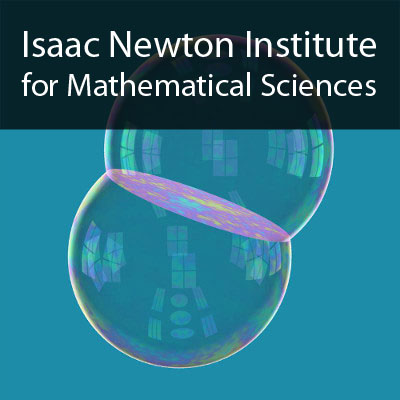Exploring analogies between bubble clusters and particle clusters
Duration: 22 mins 16 secs
Share this media item:
Embed this media item:
Embed this media item:
About this item

| Description: |
Flikkema, E (Aberystwyth University)
Thursday 27 February 2014, 14:35-14:55 |
|---|
| Created: | 2014-03-03 12:47 |
|---|---|
| Collection: | Foams and Minimal Surfaces |
| Publisher: | Isaac Newton Institute |
| Copyright: | Flikkema, E |
| Language: | eng (English) |
| Distribution: |
World
|
| Explicit content: | No |
| Aspect Ratio: | 16:9 |
| Screencast: | No |
| Bumper: | UCS Default |
| Trailer: | UCS Default |
| Abstract: | Co-author: Simon Cox (Aberystwyth University)
This presentation is about the minimal perimeter problem for two-dimensional clusters of equal-area bubbles. The challenge is to find the global minimum of the perimeter with respect to different bubble cluster topologies with a fixed number of bubbles N (up to N=42). The free bubble cluster is being considered, as well as bubble clusters confined to a circle or to various polygonal shapes. In this project, an analogy between the above-mentioned bubble cluster problem and the problem of the energetic optimisation of clusters of interacting particles is explored. For clusters of atoms, finding the global minimum of the energy with respect to the positions of the atoms is important, as it is thermodynamically most likely to be formed. Many global optimisation methods have been developed for this problem. More specifically, in this project, two dimensional clusters of particles are considered, interacting via a repulsive pair-wise potential, combined with a confining external field. The central idea is to use a particle cluster geometry to generate a bubble cluster topology. The procedure consists of the construction of Voronoi cells on the basis of the particle positions. A local optimisation of the perimeter is then carried out using Surface Evolver. In this way, minima of the particle cluster problem are used to generate candidates for the global minimal perimeter problem for two dimensional bubble clusters. Various pair-wise potentials have been tried in combination with different confining potentials (depending on whether the bubble cluster is free or confined to a circle or polygon). The success of this procedure in generating good candidates for the global minima of the bubble cluster problem was monitored. The various pair potentials have various success rates. Since the different potentials succeed or fail in different circumstances, the use of multiple potentials is recommended. |
|---|---|
Available Formats
| Format | Quality | Bitrate | Size | |||
|---|---|---|---|---|---|---|
| MPEG-4 Video | 640x360 | 1.93 Mbits/sec | 323.54 MB | View | Download | |
| WebM | 640x360 | 820.68 kbits/sec | 133.94 MB | View | Download | |
| iPod Video | 480x270 | 520.74 kbits/sec | 84.93 MB | View | Download | |
| MP3 | 44100 Hz | 249.89 kbits/sec | 40.79 MB | Listen | Download | |
| Auto * | (Allows browser to choose a format it supports) | |||||

